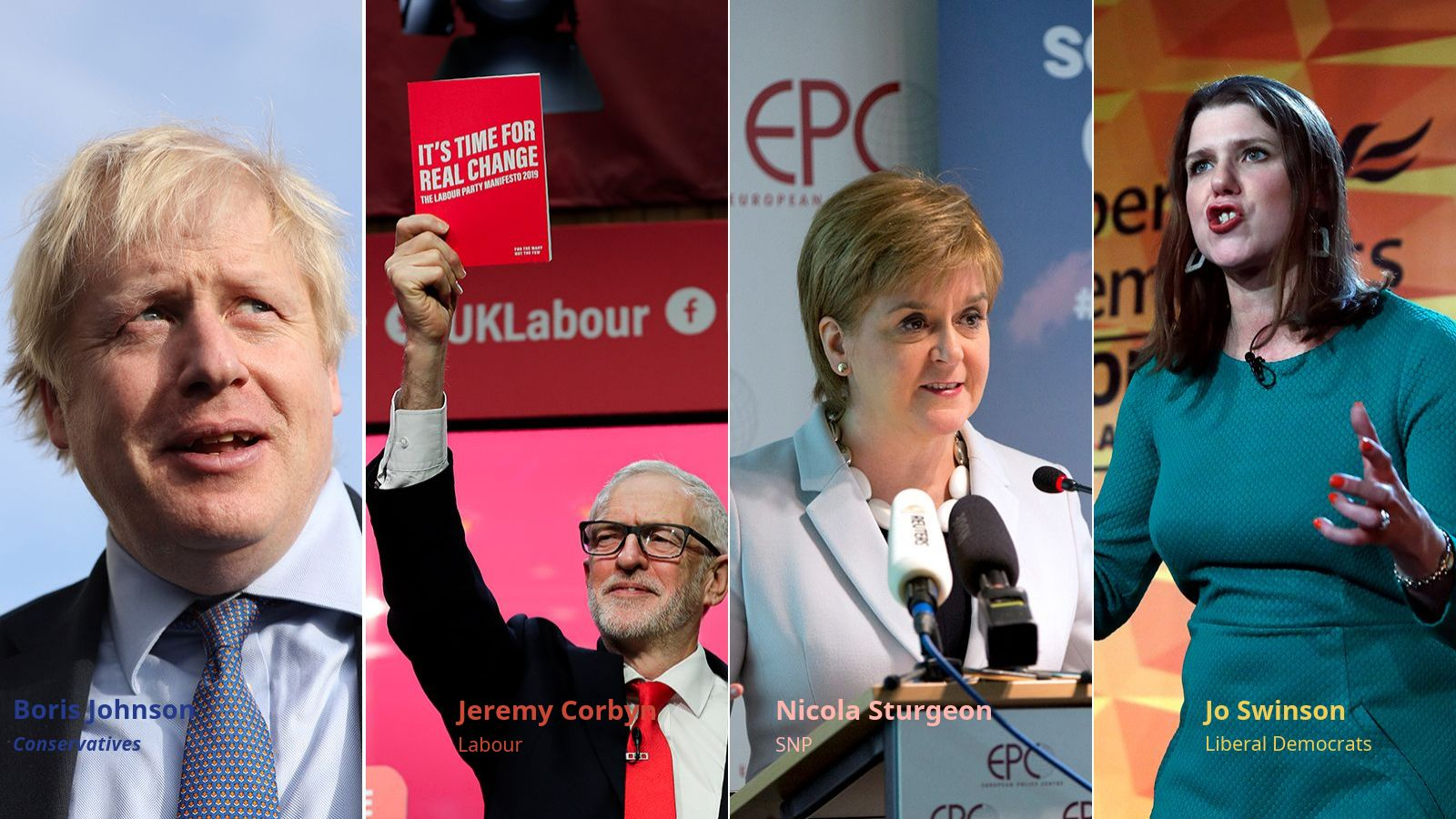
The leaders of the UK's biggest political parties Boris Johnson, Jeremy Corbyn, Nicola Sturgeon, and Jo Swinson (Credit: AP)
The leaders of the UK's biggest political parties Boris Johnson, Jeremy Corbyn, Nicola Sturgeon, and Jo Swinson (Credit: AP)
The UK is gearing up for a general election on 12 December, when voters will decide who they want to run the country.
While general elections are meant to take place every five years, this will be the third UK election within four years.
What are people voting for?
Voters from England, Scotland, Wales and Northern Ireland will choose 650 Members of Parliament (MPs) to represent them on a national level in the House of Commons.
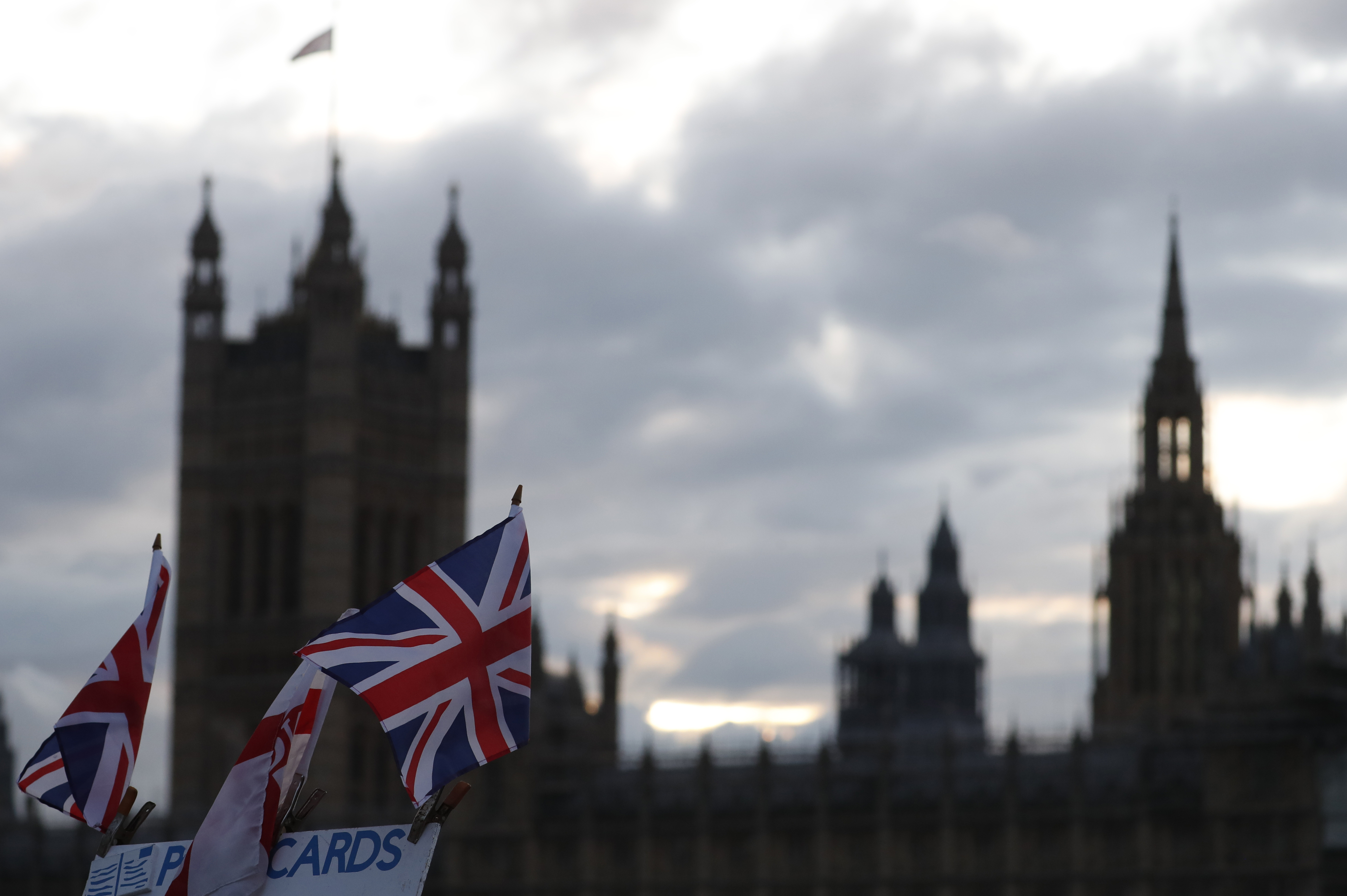
A Union flag flies in front of the Houses of Parliament (Credit: AP)
A Union flag flies in front of the Houses of Parliament (Credit: AP)
Why is there an election?
The UK voted for Brexit in the 2016 referendum, but politicians have been unable or unwilling to agree on how the UK should leave the EU.
Without a parliamentary majority, Conservative Prime Minister Boris Johnson has also struggled to pass any new legislation since taking the position in July. Therefore, he decided to push for an early general election – the next election would have been in 2022 – to break the political stalemate.
About 46 million people aged 18 and over will be eligible to vote on 12 December.
Those who are old enough can vote if they are registered and a British citizen, or if they qualify as a citizen of the Republic of Ireland or the Commonwealth. British residents with EU citizenship are otherwise unable to vote.
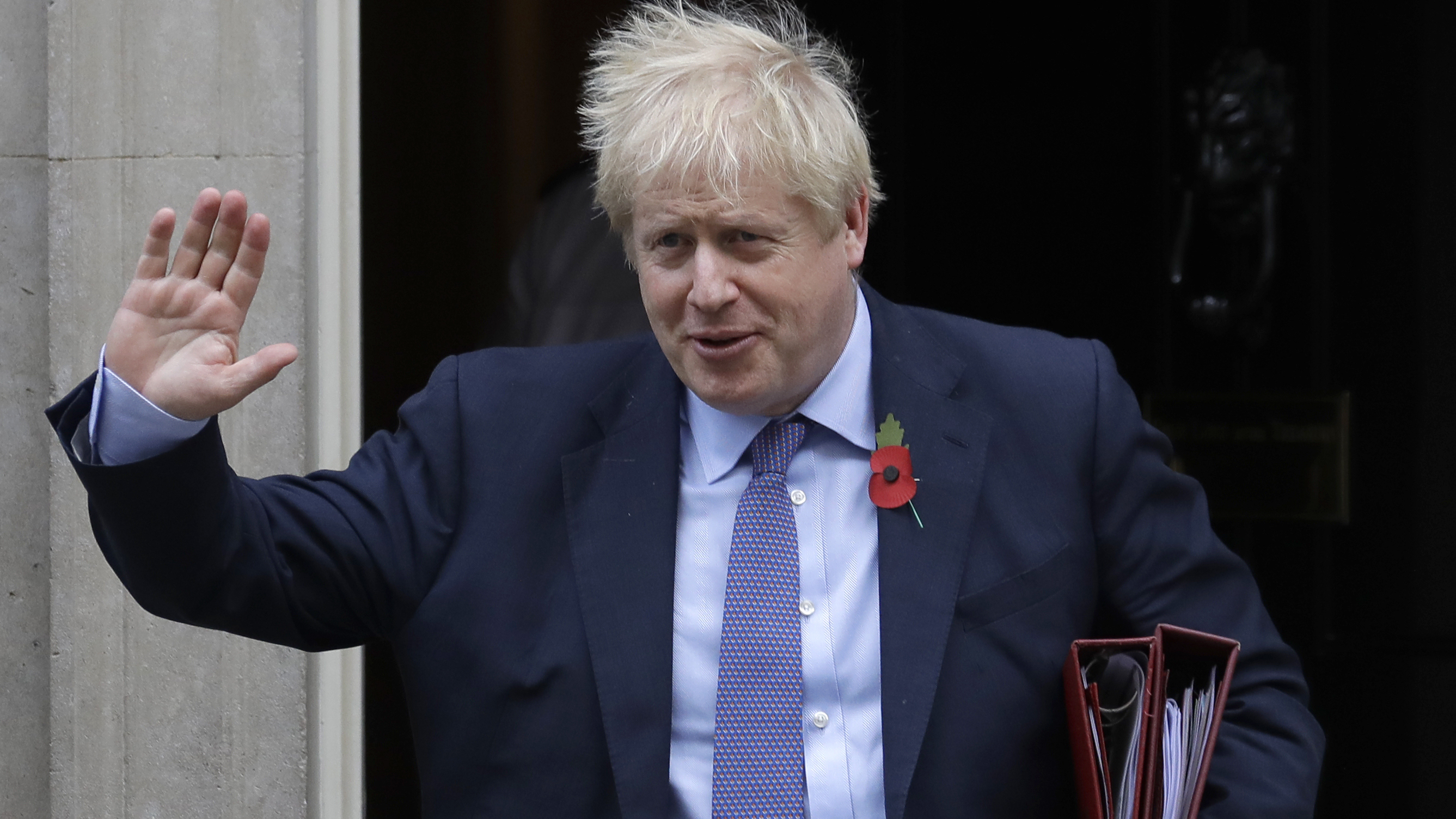
UK Prime Minister Boris Johnson (Credit: AP)
UK Prime Minister Boris Johnson (Credit: AP)
How are the winners picked?
The UK is divided into 650 areas, known as constituencies, which each elect an MP. It uses the first-past-the-post system, which means the candidate with the most votes in each constituency becomes an MP.
For a party to form a majority government, they must win at least 50 percent of the seats (325 MPs). If they do not have enough MPs, the party with the most votes normally gets the chance to form a coalition government with other parties. If they can't agree a deal to get a majority, other parties may be able to form a coalition or alliance to pass the 325 target.
The UK prime minister, unlike the French or US system, is not directly elected. MPs have the power to select the prime minister, so it is nearly always the leader of the party with the largest number of MPs.
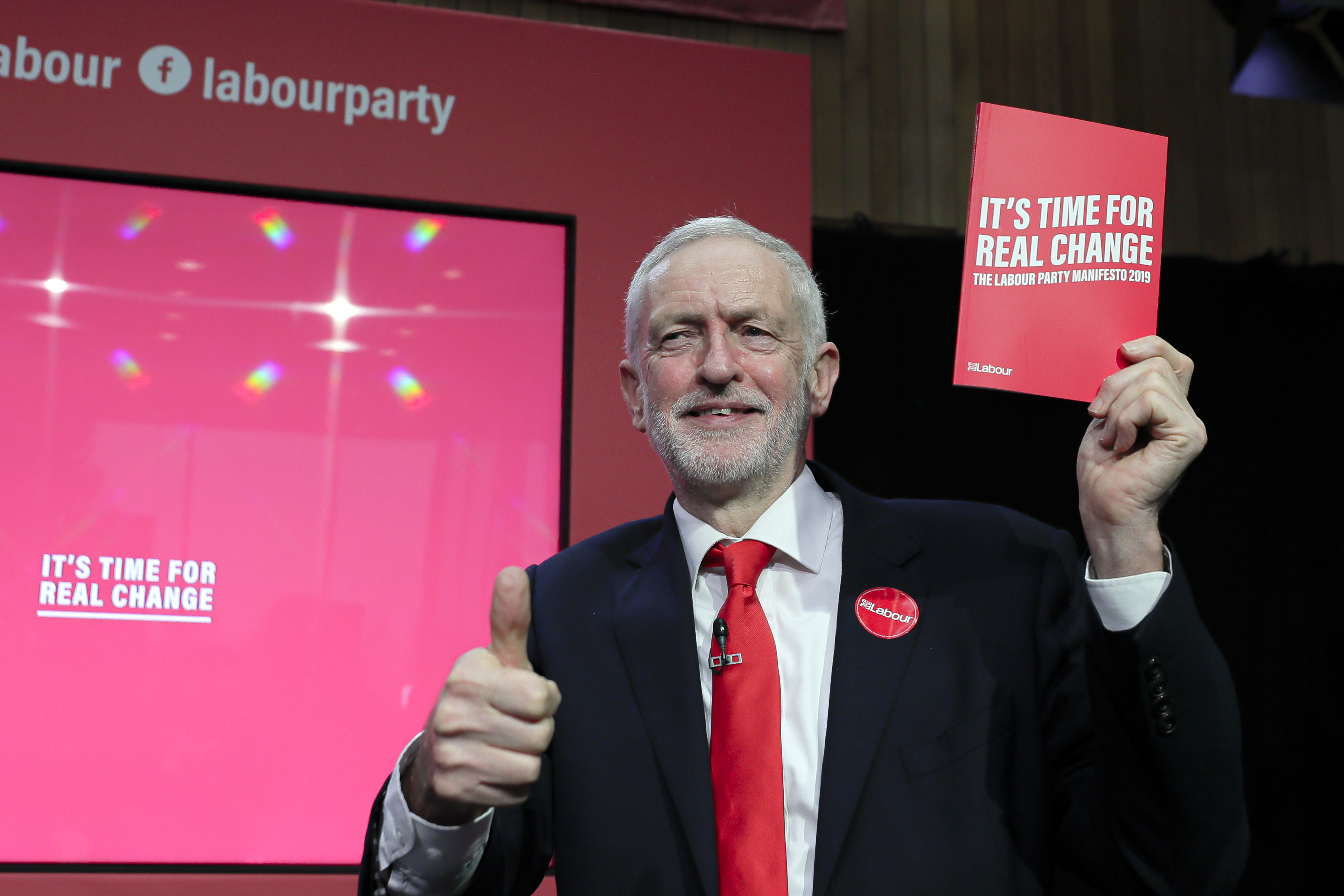
Labour leader Jeremy Corbyn with the party manifesto (Credit: AP)
Labour leader Jeremy Corbyn with the party manifesto (Credit: AP)
A large percentage of voters will choose representatives from the UK's two main political parties, the Conservative Party and the Labour Party.
But many Britons will also vote for parties that currently have fewer MPs including the Scottish National Party, the Liberal Democrats, the Green Party, Plaid Cymru, the Democratic Unionist Party, Sinn Fein, the Brexit Party and the UK Independence Party, among others.
There is also a section of the electorate that will give their vote to independent MPs, who made up 1.8 percent of the vote share in 2017.
What are the main issues?
After three-and-a-half years of negotiations, Brexit is one, if not the, key issue of the election. British voters, although fatigued by the fallout of the EU referendum, are being offered a choice of parties that range from wanting to leave the EU without any deal, to wanting to cancel Brexit and stay in the EU.
But other issues have been a focus during the campaign, with the National Health Service, the economy and wider public spending plans all ranking high, as they always tend to do at election time. All the main parties – to varying degrees – are keen to show voters it is time to move on from the austerity that followed the financial crash of 2008.
The environment has also been a big issue during the campaign.
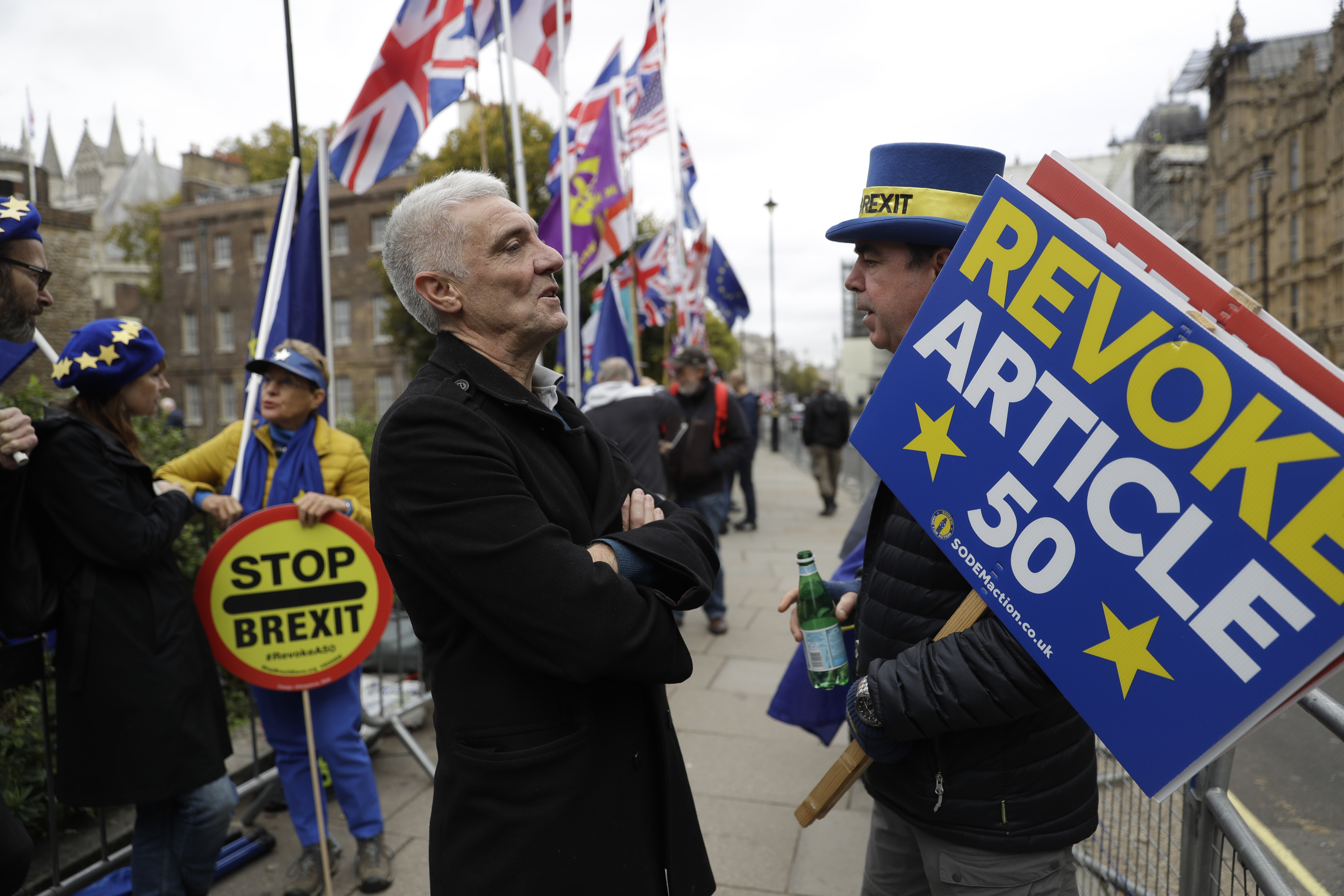
A Brexiteer and a Remainer face off outside UK Houses of Parliament (Credit: AP)
A Brexiteer and a Remainer face off outside UK Houses of Parliament (Credit: AP)
How different are the parties?
The left-of-center Labour Party and the right-of-center Conservative Party have traditionally taken the lion's share of the vote in UK general elections and for many years they battled for the center-ground of UK politics. But this time around, there are clear differences between the two parties.
The incumbent Conservatives are campaigning on the promise of getting Brexit done, reducing immigration, not putting up taxes and also more investment in some public services, such as the National Health Service.
Labour has moved to the left under Jeremy Corbyn, and is vowing to renationalize major industries and invest billions in infrastructure and public services, paid for in part by taxes on high earners. On Brexit, the party's policy is to renegotiate the terms of the UK's exit and hold a second referendum so people can choose between that new deal or staying in the EU.
The SNP, the third largest party in the 2017 election, has pledged a second Scottish independence referendum and also wants a fresh referendum on Brexit, which they hope would stop it. The Liberal Democrats are campaigning on a policy of cancelling Brexit without any fresh referendum if they were to form the next government.
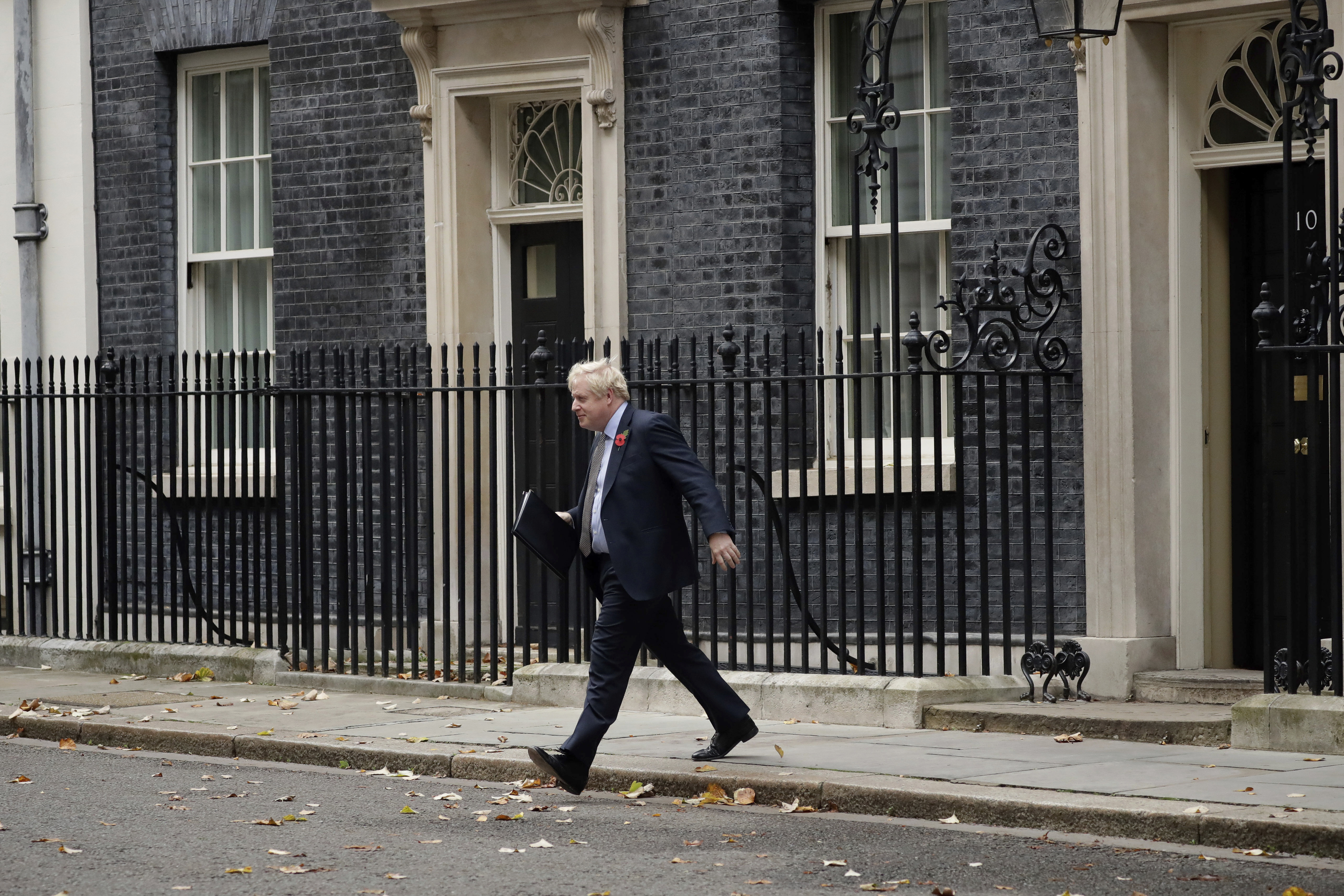
Conservative leader Boris Johnson is campaigning on a promise of getting Brexit done (Credit: AP)
Conservative leader Boris Johnson is campaigning on a promise of getting Brexit done (Credit: AP)
When will we get the results?
Voters will head to the polls on 12 December, casting their ballots in sites such as nurseries and town halls between 07:00 and 22:00 GMT.
An exit poll should be released when voting ends at 22:00. In the past, this exit poll has proved to be very accurate. But the first actual results should start coming shortly after midnight, with the result clear by breakfast time on 13 December.
If there is a clear majority, the leader of the winning party will ask the Queen for permission to form a new government. Things take slightly longer if a coalition government has to be formed.
After meeting with the Queen, the prime minister traditionally heads to 10 Downing Street, the traditional home of the UK leader, and addresses the press.
Boris Johnson, as the incumbent, remains as prime minister throughout the election campaign.